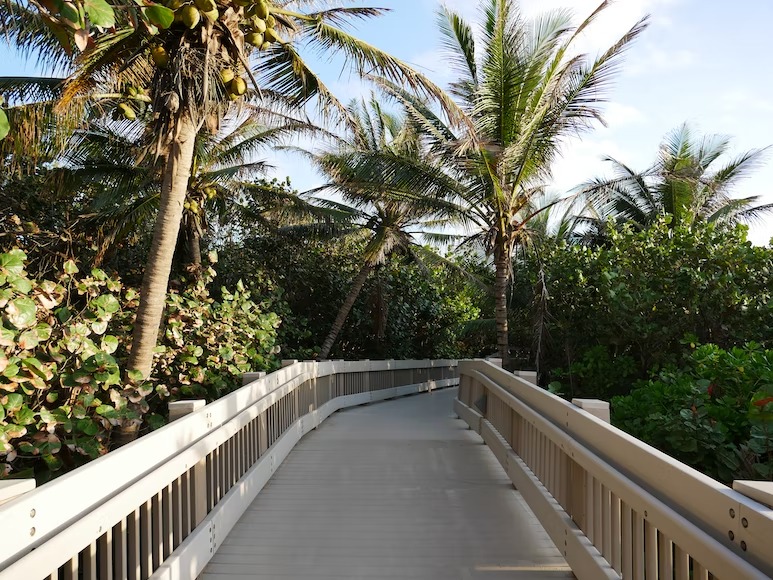Located on Florida’s southeastern coast, Boca Raton is known for its dozens of stunning parks, 5 miles of beautiful beaches, and two professional golf courses. Locals call this city “Boca,” and it truly offers something for just about anyone. Its world-class museums, open-air shopping center, and countless dining options keep you entertained and well-fed during your time in the city. However, before you pack your bags to head to Boca Raton, you should know when the best season is so you can enjoy your visit to the fullest.
Fall: September to November
Considered to be the city’s off-season, fall is one of the best times to visit Boca Raton. While prices tend to be the lowest, there’s a reason for the dip in costs. The Atlantic hurricane season runs during this time. According to TripAdvisor, hurricanes tend to affect Boca Raton approximately every two years, whether it hits the area directly or merely brushes by it. When securing accommodations, try to find a place that offers refunds just in case a hurricane ruins your visit. Lodging and flight prices should be relatively affordable during the fall.
Despite the precipitation, the city’s fall temperatures remain comfortable in the 80s during the day and mid-70s at night. October is the first month that experiences cooler temperatures and noticeably lower humidity levels. Both of these factors make it more enjoyable to be outdoors for longer periods of time. However, fall also tends to be a little breezier, especially if a hurricane is nearby.
Winter: December to February
Unlike the northern parts of the United States, Florida doesn’t experience a winter with bone-chilling temperatures and snow. Instead, Boca Raton and other Florida cities experience a dip in temperature, but in January and February, they’re only around the mid-70s during the day and upper 50s at night. As a result, Boca Raton experiences an influx of snowbirds from the northeastern part of the country as well as Canada. Since so many people tend to flock to the area during this time, vacation rentals, lodging rates, and flights to this area tend to be the highest.
December is time for the annual RoofClaim.com Boca Raton Bowl, in which two NCAA football teams play against each other. They compete at the open-air FAU Stadium located on the Florida Atlantic University campus. The game usually attracts about 20,000 people. FAU Stadium is the only stadium in the country that provides visitors with a view of the Atlantic Ocean. The winning team receives the Howard Schnellenberger championship trophy, which was named after the former FAU football coach who worked at the university from 2001 to 2011.
The Boca Raton Museum of Art hosts its annual festival in Mizner Park every February. Mizner Park features a grassy promenade with a triple-layer fountain in the center and is home to dozens of shops and restaurants. This two-day event draws approximately 50,000 art buyers and enthusiasts to this shopping district to view creations made by almost 200 artists and artisans.
Spring: March to May
Springtime in Boca Raton is more of a winter/spring hybrid with fluctuating temperatures. It’s also the driest time of year, but outside of hurricane season, the state doesn’t receive much rainfall. After cooler temperatures prevail during the winter months, March sees numbers climbing into the mid-80s during the day, but the humidity levels remain low. March is also the windiest month of the year, with average wind speeds of around 11 mph. Spring is relatively slow for tourism, so you’re likely to find deals on flights and lodging.
One of the city’s main annual attractions is the Festival of Arts BOCA, which takes place in March. Established in 2007, this 10-day event highlights the cultural arts and strives to enrich the lives of those in the community. Approximately 15,000 attendees gather at the Mizner Park Amphitheater and Mizner Park Cultural Arts Center to listen to music at concerts and visit authors at events.
Summer: June to August
This time of year is the shoulder season, which is the time between peak and off-peak travel. June marks the beginning of hurricane season, so the city experiences quite a bit of rainfall from mid to late summer. The rainiest month of the year is August, which gets about 12 inches of rain, with almost every day of the month receiving precipitation. July is the hottest month, with temperatures reaching up to the 90s during the day. The trade-off is that prices for flights and hotels are likely cheaper than at any other time of the year.
Another perk of traveling to Boca Raton during summer is the fishing. This time of the year offers some of the best fishing opportunities since many fish species are at their active points. Try your hand at catching some mahi-mahi, grouper, barracuda, and sailfish. You can secure a charter or head out on the water in your boat. It’s best to fish early in the morning and continue about two hours after sunrise or two hours before sunset and continue until dusk.
If you’re planning a visit to Boca Raton and want to take a dip in the ocean, think about heading to the area in the summer. August is when the ocean water is at its warmest temperature, which is about 86 degrees, but the other months experience temperatures in the upper 80s. The water temperatures vary slightly from the shoreline to those in the open waters. Also, offshore winds can cause colder deep-water temperatures.
As the second-largest city in the Palm Beaches area behind West Palm Beach, Boca Raton is a city worth visiting any time of the year. However, certain times are better than others due to fluctuating temperatures, popular events, and the tourism season. What do you think of this breakdown of the best seasons to visit Boca Raton created by Titan Funding? Did we focus on the right reasons to visit during each season? If we missed an important factor, please let us know.

